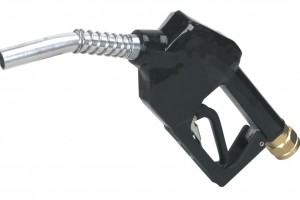Heating value of a natural gas is an important indicator of its overall value as a fuel. So let's look at what exactly we mean by the heating value of a natural gas and what are the typical heating values for different hydrocarbon gases.
What is heating value of a gas?
The heating value of a substance is the energy released upon combustion of a substance at standard conditions. The heating value can be measured as energy released per unit mass, unit volume or unit mole of a substance. For mixtures, the heating value can be estimated as a weighted sum.
It is also known as the heat of combustion.
How to measure heating value?
Heating value is a quantitative measure of heat content of a natural gas. It is experimentally measured using an apparatus called a bomb calorimeter. In such an experiment, a stoichiometric mixture of the gas and oxygen is filled in the bomb calorimeter and then allowed to go through complete combustion. The container is then cooled down to initial starting temperature.
All of the heat released by the gases during the combustion and cool down processes, corresponds to the heating value of that gas.
Heating values for natural gas hydrocarbons
The following table gives heating values of various hydrocarbons and some other gases in Btu/Scf (energy released per unit volume).
BTU : British Thermal Unit for energy
SCF : Standard Cubic Feet of gas
(Standard conditions correspond to 1.013 bara and 200C
| Gas | Gross Heating Value (Btu/Scf) | Net Heating Value (Btu/Scf) |
| Methane | 1012 | 911 |
| Ethane | 1783 | 1631 |
| Propane | 2557 | 2353 |
| isobutane | 3354 | 3094 |
| n-butane | 3369 | 3101 |
| isopentane | 4001 | 3698 |
| n-pentane | 4009 | 3709 |
| Neopentane | 3987 | 3685 |
| n-hexane | 4755.9 | 4403.8 |
| 2-Methylpentane | 4747.3 | 4395.2 |
| 3-Methylpentane | 4750.3 | 4398.2 |
| Neohexane | 4736.2 | 4384 |
| 2,3-Dimethylbutane | 4745 | 4392.9 |
| n-heptane | 5502.5 | 5100 |
| 2-Methylhexane | 5494.6 | 5092.2 |
| 3-Methylhexane | 5498.6 | 5096 |
| 3-Ethylpentane | 5500.7 | 5098.3 |
| 2,2-Dimethylpentane | 5481.9 | 5079.6 |
| 2,4-Dimethylpentane | 5486.7 | 5084.2 |
| 3,3-Dimethylpentane | 5488.8 | 5086.4 |
| Triptane | 5483.5 | 5081.2 |
| n-octane | 6248.9 | 5796.1 |
| Dilsobutyl | 6233.5 | 5780.5 |
| Isooctane | 6231.7 | 5778.8 |
| n-Nonane | 6996.5 | 6493.2 |
| n-Decane | 7742.9 | 7189.6 |
| Cyclopentane | 3763.7 | 3512.1 |
| Methylcyclopentane | 4501.2 | 4199.4 |
| Cyclohexane | 4481.7 | 4179.7 |
| Methylcyclohexane | 5215.9 | 4863.6 |
| Ethene (Ethylene) | 1599.8 | 1499.1 |
| Propene (Propylene) | 2332.7 | 2181.8 |
| 1-Butene (Butylene) | 3079.9 | 2878.7 |
| cio-2-Butene | 3072.2 | 2871 |
| trans-2-butene | 3068 | 2866.8 |
| isobutene | 3061.1 | 2859.9 |
| 1-pentene | 3826.5 | 3575 |
| 1,2-Butadiene | 2939.9 | 2789 |
| 1,3-Butadiene | 2879.9 | 2729 |
| Isoprene | 3612.1 | 3410.8 |
| Acetylene | 1475.5 | 1423.2 |
| Benzene | 3741.8 | 3590.9 |
| Toluene | 4475 | 4273.6 |
| Ethylbenzene | 5222.2 | 4970.5 |
| o-Xylene | 5209.9 | 4958.2 |
| m-Xylene | 5207.9 | 4956.3 |
| p-xylene | 5208.8 | 4957.1 |
| Styrene | 5031.1 | 4829.8 |
| Isopropylbenzene | 5962.8 | 5660.9 |
| Methyl alcohol | 866.7 | 766.1 |
| Ethyl alcohol | 1599.1 | 1448.1 |
| Carbon monoxide | 320.5 | 320.5 |
| Hydrogen sulfide | 637.1 | 586.8 |
| Ammonia | 434.4 | 359 |
| Hydrogen | 324.2 | 273.8 |

